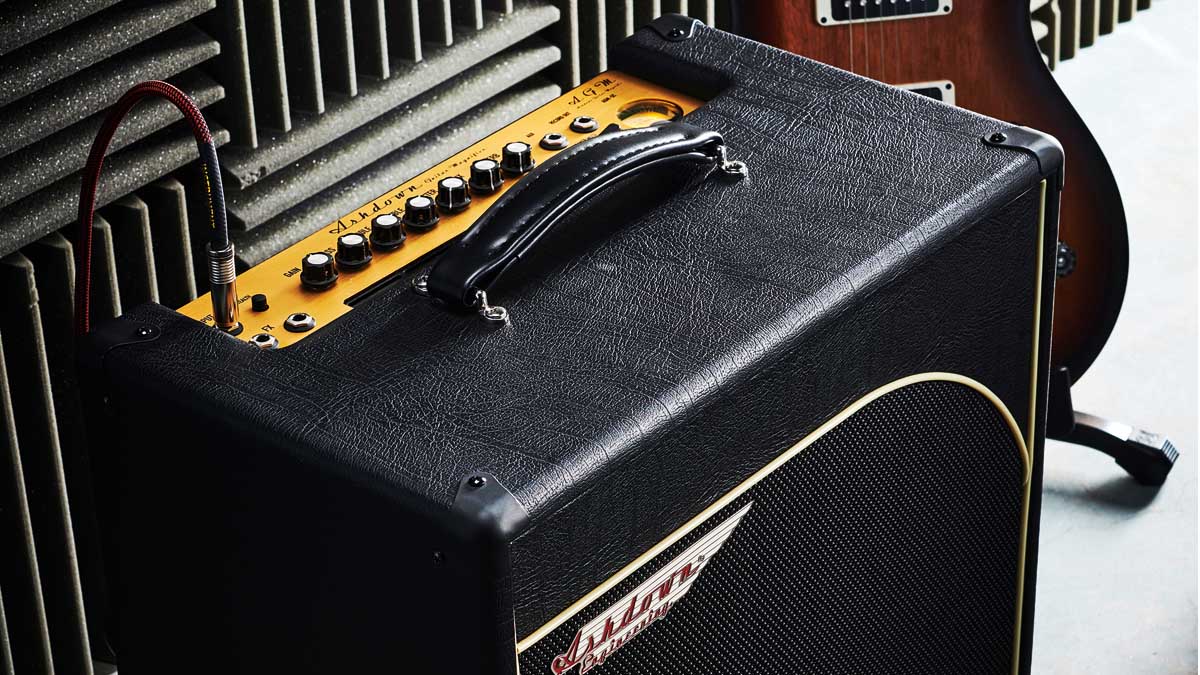Guitar World Verdict
No matter how good digital tastes, there's something special about pure tube tone, and this compact and affordable Ashdown combo has a wealth of classic British amp sounds, and quite wonderful dynamics.
Pros
- +
Very versatile, ideal for pedals.
- +
Classic British sounds and style.
- +
Legendary Ashdown build quality.
- +
Very competitive pricing.
Cons
- -
Fully enclosed chassis makes quick tube replacement difficult.
You can trust Guitar World
Ashdown Music is well known all over the world as a leading purveyor of sound reinforcement to the lower octaves. With such a strong following in the bass community, its equally impressive guitar amplification has sometimes been a little unfairly overshadowed.
However, the company’s latest range could change all of that. Introduced at the beginning of 2020, the new Ashdown Guitar Magnifier series takes its cue from the company’s world-beating Bass Magnifier amps. Handmade in the UK at Ashdown’s Essex HQ, the AGM amplifiers promise a tempting blend of real valve tone, legendary Ashdown build quality and affordable pricing.
There are heads and combos to suit all needs and pockets; here we’re looking at the best-selling AGM-5C combo. The AGM-5C is a smartly presented compact combo, featuring a deeper than average plywood cabinet with a semi-closed back.
The woodwork is expertly covered in heavy duty black vinyl with metal corner protectors, white piping, a black cloth speaker grille and a smart brushed gold control panel.
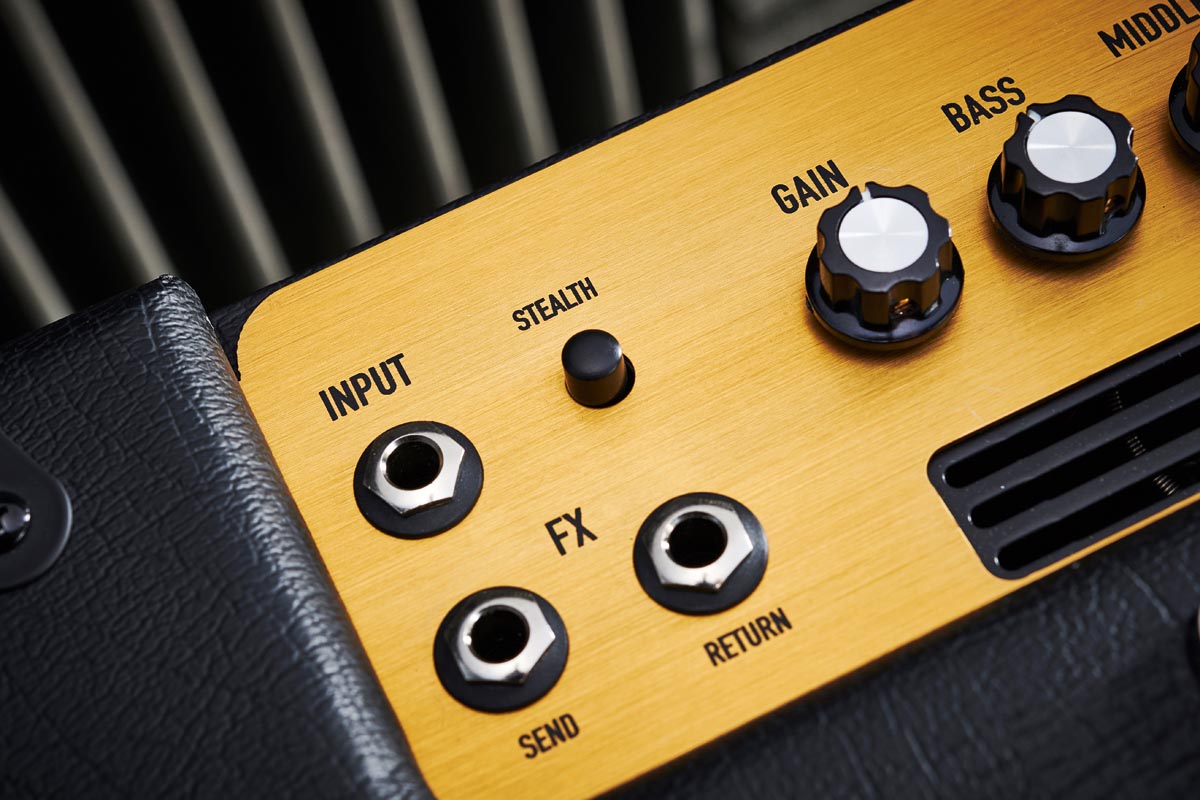
A piped curve on the front panel adds a touch of boutique style; it’s easy to get details like this wrong, but to our eyes it’s perfectly balanced and sits nicely over the famous Ashdown badge. All the electronics live on a hefty L-shaped steel chassis that’s bolted to the cabinet’s rear baffle, with the short leg forming the top-facing control panel.
There’s one large high-quality printed circuit board that holds most of the small components, including the Accutronics digital reverb module and bases for the AGM-5C’s two valves: a 12AX7 preamp and a single EL84 for the output stage.
The resistors are mostly metal film, which helps keep hiss levels down, while the front-panel controls connect to the PCB with short flying leads. All the hand wiring is neatly routed, with nice bright solder joints. There’s no convenient access to the AGM-5C’s valves – if you need to replace them, the entire chassis must come out.
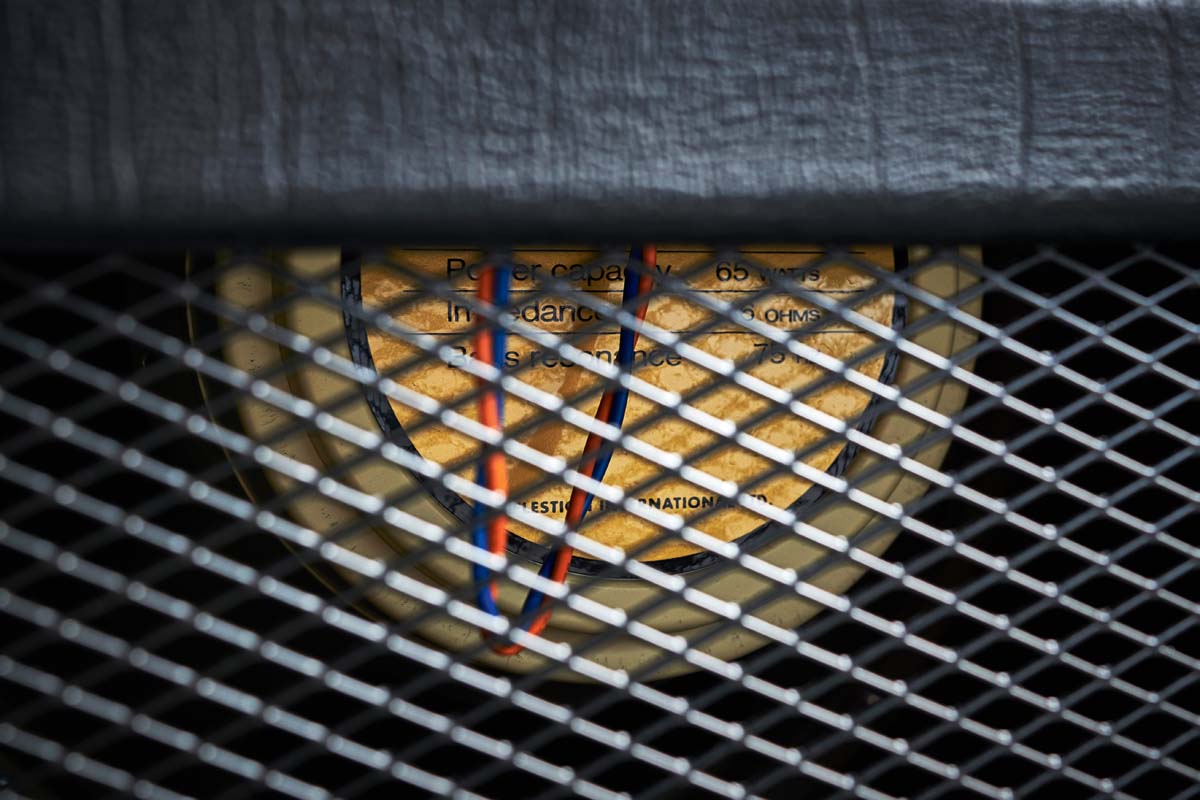
The Ashdown’s decibels are delivered by a premium Celestion G12M-65 Creamback loudspeaker, one of the most popular drivers in Celestion’s current range.
The Creamback’s hefty ceramic magnet together with a pair of generously sized Demeter transformers mean this combo is no lightweight, though it’s still easy to lift and carry single-handed. This is a straightforward single-channel design but with some interesting features.
There are rotary controls for gain, bass, mid, treble and master volume, with a level control for the digital reverb effect. There’s an Aux In jack socket with its own Mix control for attaching mp3 players or second instruments, together with a headphones jack and a separate speaker-compensated recording output.
Ashdown’s trademark VU meter lights up to tell you the amp is on and gives you a useful indication of how loud you can go before the neighbours start hammering on the walls
We also get a pair of send/return jacks for its series effects loop. Close to the input jack, a push-button switch marked ‘Stealth’ drops the output down to around one watt for home use, while a Speaker Mute switch turns off the sound completely for silent recording.
On the far right of the control panel, Ashdown’s trademark VU meter lights up to tell you the amp is on and gives you a useful indication of how loud you can go before the neighbours start hammering on the walls. Overall, the AGM-5C is a good-looking small combo that can sit unobtrusively in studio corners or small club bandstands without taking up much room.
Feel & Sounds
Warming up quickly and quietly, with practically zero hiss and hum, the AGM-5C is an ideal partner for home use and recording. We tried out the Ashdown with our usual test guitars: a Les Paul fitted with an old pair of PAFs, and a Strat loaded with low-ish output Duncan Alnico Pro 2s.
AC/tweed-inspired voicing is perfect for classic British rock and blues and revs up to an impressive crunch when the Gain control is maxed out, especially when partnered with the Les Paul.
AC/tweed-inspired voicing is perfect for classic British rock and blues and revs up to an impressive crunch when the Gain control is maxed out, especially when partnered with a Les Paul
Back the gain off and it sounds equally inspiring for indie, jazz and country stuff, with a satisfying woody low-end thump, helped by the generous cabinet dimensions and semi-closed-back design.
The reverb comes from the popular Accutronics Digi-Log BTDR-2 module, which does a great job of emulating the behaviour of a physical reverb spring. Ashdown uses the ‘L’ (long decay) version and there’s plenty of effect available.
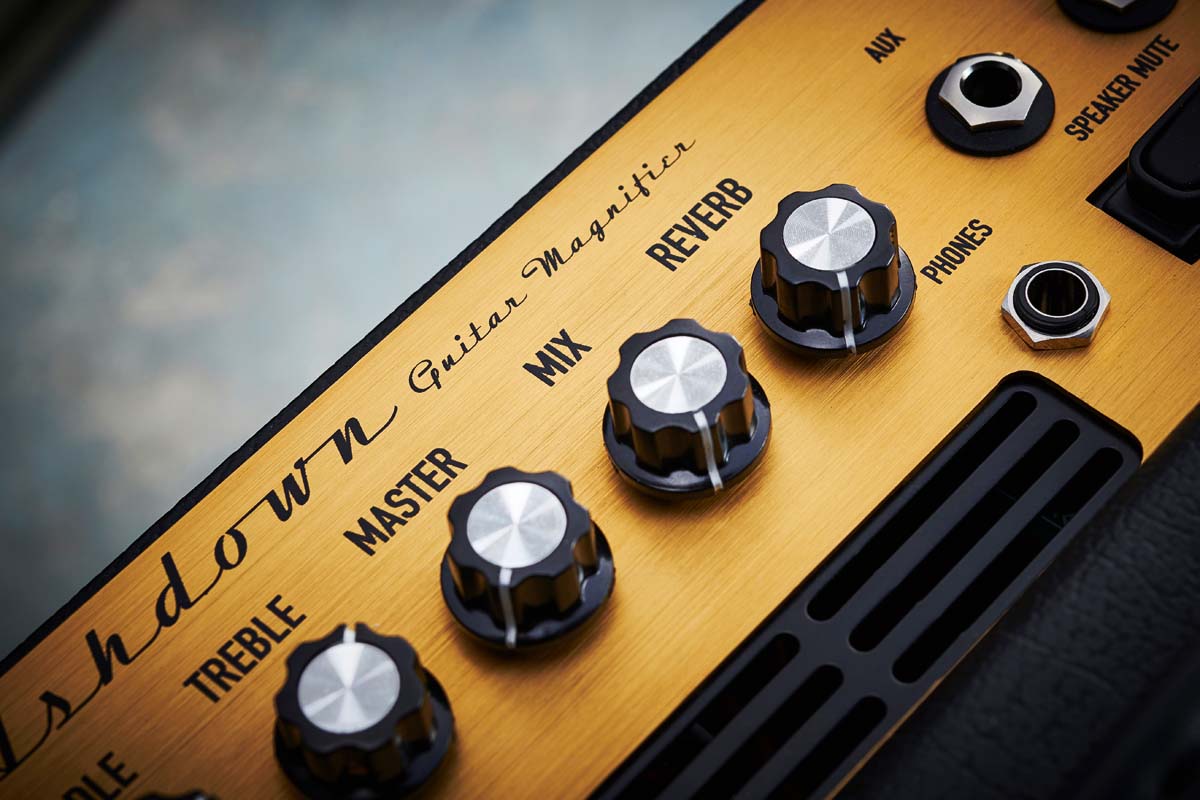
The most realistic reverberations happen in the first quarter of the Reverb knob’s travel – as you go beyond halfway, the dry amp sound is progressively dialled out, leaving just the effect signal with the knob set at 10.
This is great fun for creating ethereal background washes and, while it’s not something you’d use every day, it’s a nice extra to have in your back pocket for those moments when an artist/producer asks, ‘Can you make some spacey guitar sounds over this track?’
Despite the modest five-watt rating, the AGM-5C is plenty loud enough for recording or small clubs
Despite the modest five-watt rating, the AGM-5C is plenty loud enough for recording or small clubs. If you need to go quieter, the Stealth button is a useful feature that drops the output right down to around one watt, engaging a clever ASC (Active Speaker Compensation) circuit that makes the amp sound like it’s cranked up even at conversation levels.
Meanwhile, with the AGM-5C’s speaker muted, the compensated recording output provides a great direct sound, with little or no desk EQ needed.
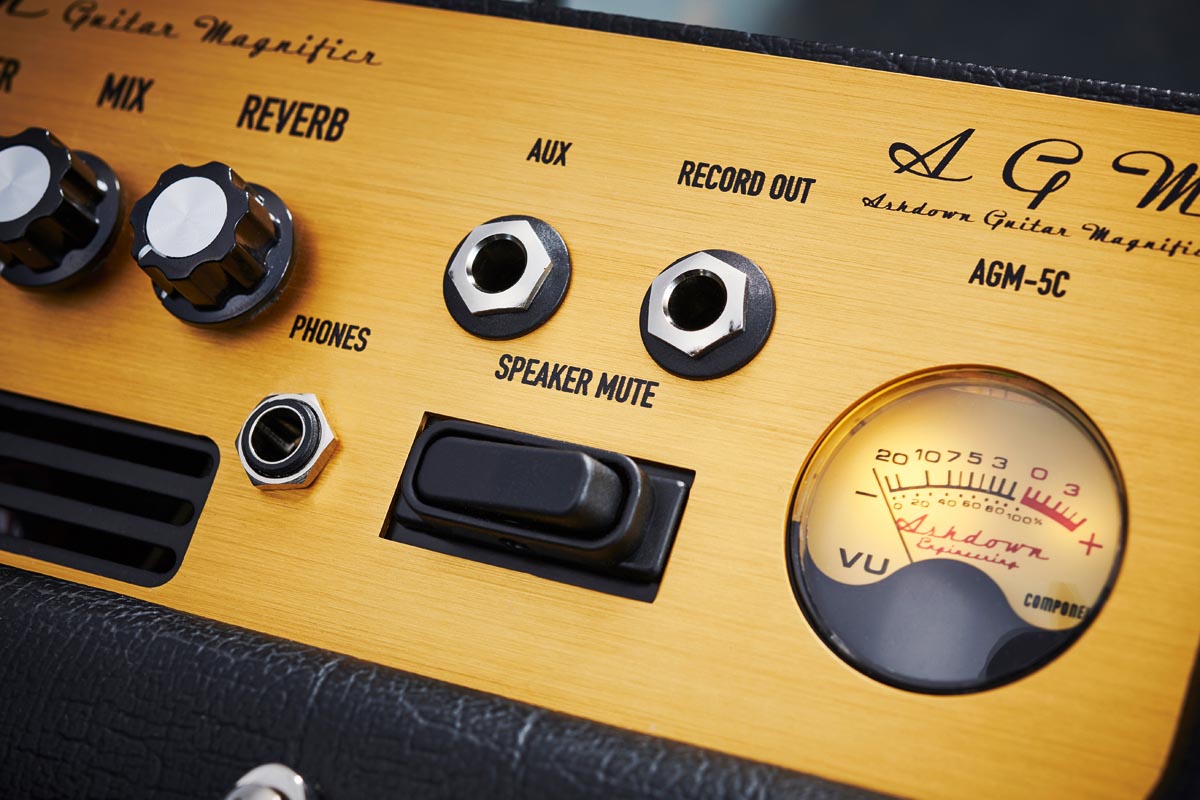
Verdict
While we wait for live music to return in some shape or form, small combos that sound cranked up at internet-friendly volume levels are the amps du jour. Ashdown’s AGM-5C does this easily and much more, with the flexibility to record great tracks that sit nicely in a mix and handle smaller gigs, as and when they begin to appear again.
As good as digital and solid-state have become, pure valve tone still takes some beating and this combo’s single-ended Class A valve output stage makes for a very rewarding playing experience, with classic British sounds and touch-sensitive dynamics that sound great with or without pedals, flattering any playing style.
For a product that’s made in Ashdown’s UK custom shop, the AGM-5C is great value for money, too. Look beyond the bass and you’ll be more than pleasantly surprised!
Specs
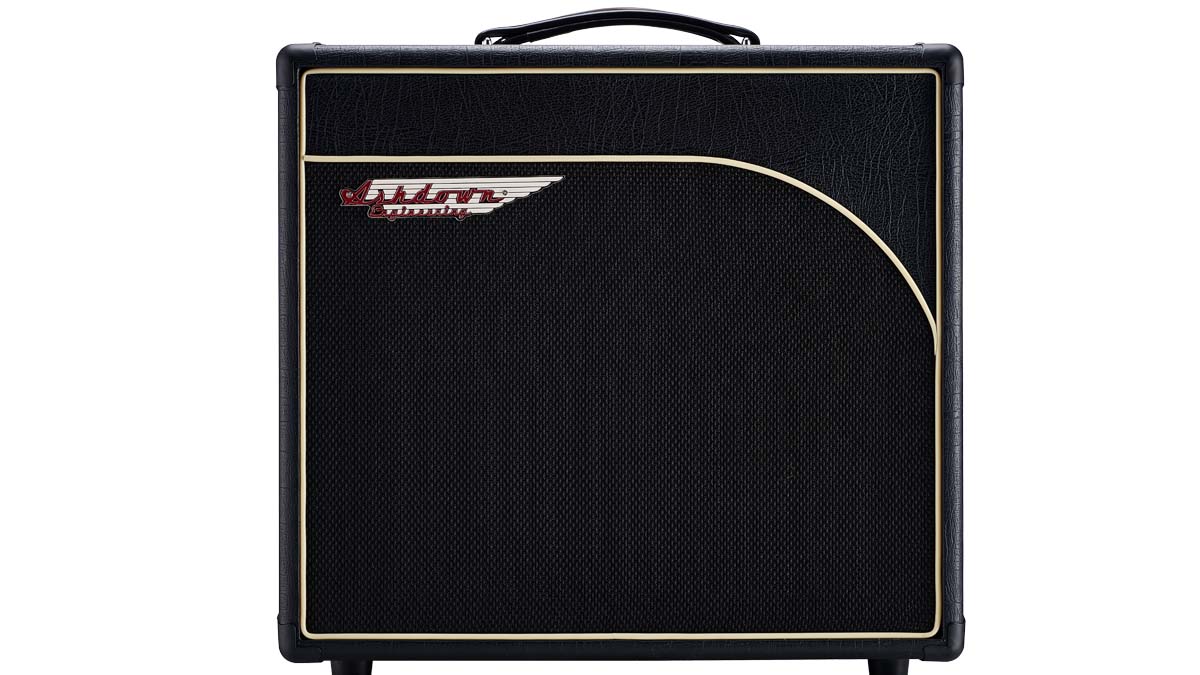
- PRICE: £749
- ORIGIN: UK
- TYPE: Valve preamp and valve power amp with digital reverb
- OUTPUT: 5W switchable to 1W
- VALVES: 1x 12AX7, 1x EL84
- DIMENSIONS: 435 (h) x 460 (w) x 265mm (d)
- WEIGHT (kg/lb): 13/28
- CABINET: Plywood
- LOUDSPEAKERS: 1x12” Celestion Creamback G12M-65
- CHANNELS: 1
- CONTROLS: Gain, bass, mid, treble, master volume, aux input mix level, reverb level. Stealth button and Speaker Mute switch
- FOOTSWITCH: None
- ADDITIONAL FEATURES: External speaker jack, series effects loop, aux in with mix control, speakercompensated recording out with speaker mute switch, headphones socket, Stealth feature reduces output to approx. 1W
- CONTACT: Ashdown
Nick Guppy was Guitarist magazine's amp guru for over 20 years. He built his first valve amplifier at the age of 12 and bought, sold and restored many more, with a particular interest in Vox, Selmer, Orange and tweed-era Fenders, alongside Riveras and Mark Series Boogies. When wielding a guitar instead of soldering iron, he enjoyed a diverse musical career playing all over the UK, including occasional stints with theatre groups, orchestras and big bands as well as power trios and tributes. He passed away suddenly in April 2024, leaving a legacy of amplifier wisdom behind him.
"I never use my tube amp at home now, because I have a Spark Live": 5 reasons you should be picking up the Positive Grid Spark Live in the massive Guitar Month sale
“Our goal is to stay at the forefront of amplification innovation”: How Seymour Duncan set out to create the ultimate bass amp solution by pushing its PowerStage lineup to greater heights
